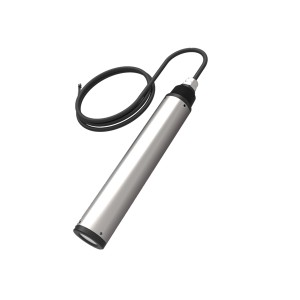Featured Products
-

Digital Nitrate Nitrogen Sensor
Measuring Principle
NO3-N will be absorbed at 210 nm UV light. When the Spectrometer Nitrate sensor is working, the water sample flows through the slit. When the light from the light source in the sensor passes through the slit, part of the light is absorbed by the sample flowing in the slit, and the other light passes through the sample and reaches the other side of the sensor. Calculate the concentration of nitrate.
-

BQ301 Online Multi-parameter Water Quality Sensor
BOQU Online Multi-Parameter Water Quality Sensor is suitable for long-term field on-line monitoring. It can achieve the function of data reading , data storage and real-time online measurement of temperature, water depth, pH, conductivity, salinity, TDS,turbidity, DO, chlorophyll and blue-green algae at the same time.it also can be customized according to special requirements.
-

Online Multi-parameter Water Quality Sensor
BOQU Online Multi-Parameter Water Quality Sensor is suitable for long-term field on-line monitoring. It can achieve the function of data reading , data storage and real-time online measurement of temperature, water depth, pH, conductivity, salinity, TDS,turbidity, DO, chlorophyll and blue-green algae at the same time.it also can be customized according to special requirements.
-

Online Multi-parameter Water Quality Sensor river water monitor
BOQU Online Multi-Parameter Water Quality Sensor is suitable for long-term field on-line monitoring. It can achieve the function of data reading , data storage and real-time online measurement of temperature, water depth, pH, conductivity, salinity, TDS,turbidity, DO, chlorophyll and blue-green algae at the same time.it also can be customized according to special requirements.
-

Digital Chlorophyll A Sensor for river
The digital chlorophyll sensor uses the characteristic that chlorophyll A has absorption peaks and emission peaks in the spectrum. It emits monochromatic light of a specific wavelength and irradiates water. The chlorophyll A in water absorbs the energy of the monochromatic light and releases a monochromatic light of another wavelength Color light, the intensity of light emitted by chlorophyll A is proportional to the content of chlorophyll A in water.
-

BH-485-CHL Digital Chlorophyll A Sensor
The digital chlorophyll sensor uses the characteristic that chlorophyll A has absorption peaks and emission peaks in the spectrum. It emits monochromatic light of a specific wavelength and irradiates water. The chlorophyll A in water absorbs the energy of the monochromatic light and releases a monochromatic light of another wavelength Color light, the intensity of light emitted by chlorophyll A is proportional to the content of chlorophyll A in water.
-

BH-485-Algae BOQU Instrument Blue-green Algae Sensor
Blue-green algae (BGA), also known as cyanobacteria, can range in colors from blues, greens, reds, and black. Blue-green algae can reduce nitrogen and carbon in water, but can also deplete dissolved oxygen when overabundant. Monitoring Blue-green algae is important because they pose a serious threat to water quality, ecosystem stability, surface drinking water supplies, and public health through toxin production and the large biomass produced in algal blooms.
-

Digital Chlorophyll A Sensor river water monitoring
The digital chlorophyll sensor uses the characteristic that chlorophyll A has absorption peaks and emission peaks in the spectrum. It emits monochromatic light of a specific wavelength and irradiates water. The chlorophyll A in water absorbs the energy of the monochromatic light and releases a monochromatic light of another wavelength Color light, the intensity of light emitted by chlorophyll A is proportional to the content of chlorophyll A in water.



